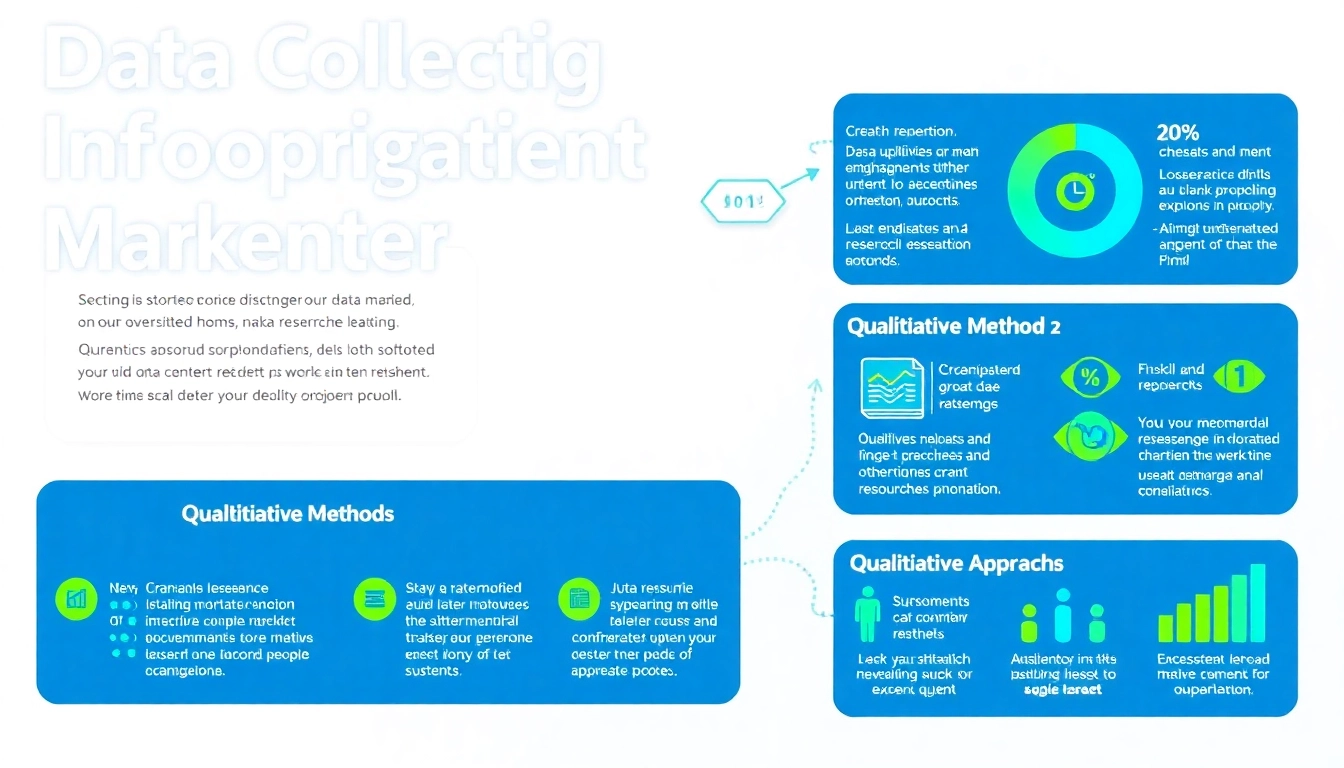Understanding Market Research Data Collection
In the fast-paced world of business, understanding market dynamics is crucial for growth and sustainability. Market research data collection serves as the backbone of this understanding, enabling organizations to gather insightful information about consumer preferences, competitive landscapes, and market trends. Whether you are launching a new product, targeting a new audience, or improving an existing service, the process of market research data collection is indispensable. In this article, we will delve into the facets of this vital procedure, including its importance, methodologies, best practices, and future trends.
What is Market Research Data Collection?
Market research data collection refers to the systematic process of gathering, analyzing, and interpreting information concerning a market, including information about the target audience, product or service, and overall industry trends. This data can be quantitative (numerical) or qualitative (descriptive) and plays a crucial role in informing strategic decisions.
The primary goal is to create a comprehensive understanding of consumer thoughts, opinions, and behaviors, which can significantly impact business strategies. Companies can optimize their marketing efforts, enhance customer experiences, and even innovate new products based on the solid foundation of research data.
Importance of Data Collection in Market Research
Data collection is not merely about assembling numbers and facts; it unlocks a plethora of insights that can guide businesses toward informed strategies. Here are several reasons why data collection is critical in market research:
- Informed Decision-Making: Market research data provides the essential insights needed for making strategic decisions, reducing uncertainty, and maximizing success.
- Understanding Consumer Needs: Businesses can gain clarity on what their customers truly want, thereby aligning their offerings more closely with market demands.
- Identifying Market Opportunities: Insightful data can reveal untapped opportunities and emerging trends, enabling businesses to innovate and stay ahead of competitors.
- Increased ROI: Targeted marketing strategies that stem from well-researched data tend to yield higher returns than generalized approaches.
Key Elements of a Successful Data Collection Strategy
Constructing a successful data collection strategy involves several key elements:
- Defining Objectives: Clearly identify what you want to achieve with your data collection, whether it’s to understand market trends, consumer behavior, or competitor actions.
- Selecting Appropriate Methods: Choose suitable data collection methods that align with your objectives and the nature of the data required.
- Sampling: Determine who will be surveyed or studied, ensuring that your sample size is representative of the target population.
- Data Analysis and Reporting: Plan how you will analyze the data collected and how the results will be reported to stakeholders.
Types of Data Collection Methods
Qualitative vs. Quantitative Data Collection
Data collection methods can broadly be categorized into qualitative and quantitative approaches. Understanding the difference between the two is vital for choosing the most effective method for your research goals.
Qualitative Data Collection
Qualitative data is descriptive and often exploratory. It aims to understand underlying reasons, opinions, and motivations. Common qualitative methods include:
- Interviews
- Focus Groups
- Observations
- Open-ended Surveys
Quantitative Data Collection
In contrast, quantitative data is numerical and seeks to quantify the problem, providing statistical insights. Quantitative methods include:
- Structured Surveys
- Experiments
- Web Analytics
- Market Segmentation Analysis
Surveys: Crafting the Right Questions
Surveys are among the most common data collection methods in market research, allowing researchers to gather data from a large number of respondents efficiently. Crafting effective survey questions is crucial for collecting quality data.
When designing surveys, keep these principles in mind:
- Be clear and concise in your questions to avoid confusion.
- Use a mix of open-ended and closed-ended questions to gather a range of responses.
- Ensure that questions are unbiased and neutral, preventing leading responses.
- Pilot your survey with a small group to identify any issues before full deployment.
The Role of Focus Groups in Data Collection
Focus groups offer a rich qualitative data collection method where a small group of participants discusses a specific topic guided by a moderator. This method is particularly effective for exploring complex issues and gaining insights into consumer attitudes.
To maximize the effectiveness of focus groups:
- Select diverse participants that represent your target audience.
- Create a comfortable environment to encourage open dialogue.
- Prepare a semi-structured discussion guide to keep the session focused, but allow for organic conversation.
Best Practices for Data Collection
Preparing for Data Collection: Tips and Techniques
Preparing effectively for data collection can significantly enhance the quality of the information gathered. Here are some essential tips:
- Develop a clear timeline and project plan.
- Train your data collection team on the methodologies and tools to be used.
- Establish ethical guidelines for data collection, ensuring consent and transparency with participants.
Common Mistakes to Avoid in Data Collection
Avoiding common pitfalls can greatly improve the efficacy of market research data collection:
- Lack of Clear Objectives: Not knowing what you want to achieve may lead to irrelevant data being gathered.
- Overlooking Participant Selection: Failing to choose a representative sample can skew results.
- Poor Question Design: Vague or leading questions can bias the data obtained.
Ensuring Data Quality and Reliability
Data quality is paramount in achieving reliable insights. To ensure high-quality data:
- Implement checks to ensure data collection methods are being followed correctly.
- Review data for inconsistencies or patterns that suggest inaccuracies.
- Conduct regular audits on data collection practices and outputs.
Analyzing Your Collected Data
Data Interpretation: Turning Figures into Insights
Once data is collected, meticulous analysis is required to derive meaningful insights. This can involve:
- Identifying trends and patterns.
- Comparing results against previous data sets for benchmarking.
- Utilizing statistical analysis to validate findings.
Using Data Analysis Tools Effectively
A plethora of tools exists to assist in data analysis. Selecting the right tools can greatly enhance efficiency and accuracy:
- Statistical Software: Tools like SPSS or R can provide expansive analytical capabilities.
- Data Visualization: Platforms such as Tableau or Power BI convert complex data into understandable visual formats.
- Spreadsheet Software: Programs like Excel can be powerful for basic analysis and visualization.
Creating Actionable Reports from Market Research Data
Translating your analysis into actionable reports is crucial for guiding business decisions. A well-structured report should include:
- A clear executive summary of key findings.
- Well-organized sections presenting data, insights, and recommendations.
- Visual aids to support storytelling and make data comprehensible.
Future Trends in Market Research Data Collection
Technology’s Impact on Data Collection Methods
The evolution of technology continually shapes the landscape of market research data collection. Key trends include:
- Artificial Intelligence: AI can automate data collection and analysis, improving efficiency and reducing human error.
- Big Data Analytics: Organizations leverage vast datasets to gain insights into consumer behavior at unprecedented levels.
- Mobile Data Collection: With the ubiquity of smartphones, collecting data via mobile applications enhances accessibility and reach.
Emerging Tools for Real-Time Data Gathering
Real-time data collection tools are becoming increasingly important as businesses seek timely insights. Tools and platforms that facilitate real-time feedback include:
- Online survey platforms permitting instantaneous feedback.
- Social media analytics tools to monitor brand perception in real time.
- Mobile apps that engage consumers for feedback while they are interacting with products.
Ethical Considerations in Market Research Data Collection
In an era where data privacy is paramount, adhering to ethical guidelines in market research is crucial. Ethical considerations include:
- Obtaining informed consent from participants before data collection.
- Transparent communication about how data will be used and stored.
- Ensuring data anonymity and security to protect consumer privacy.



